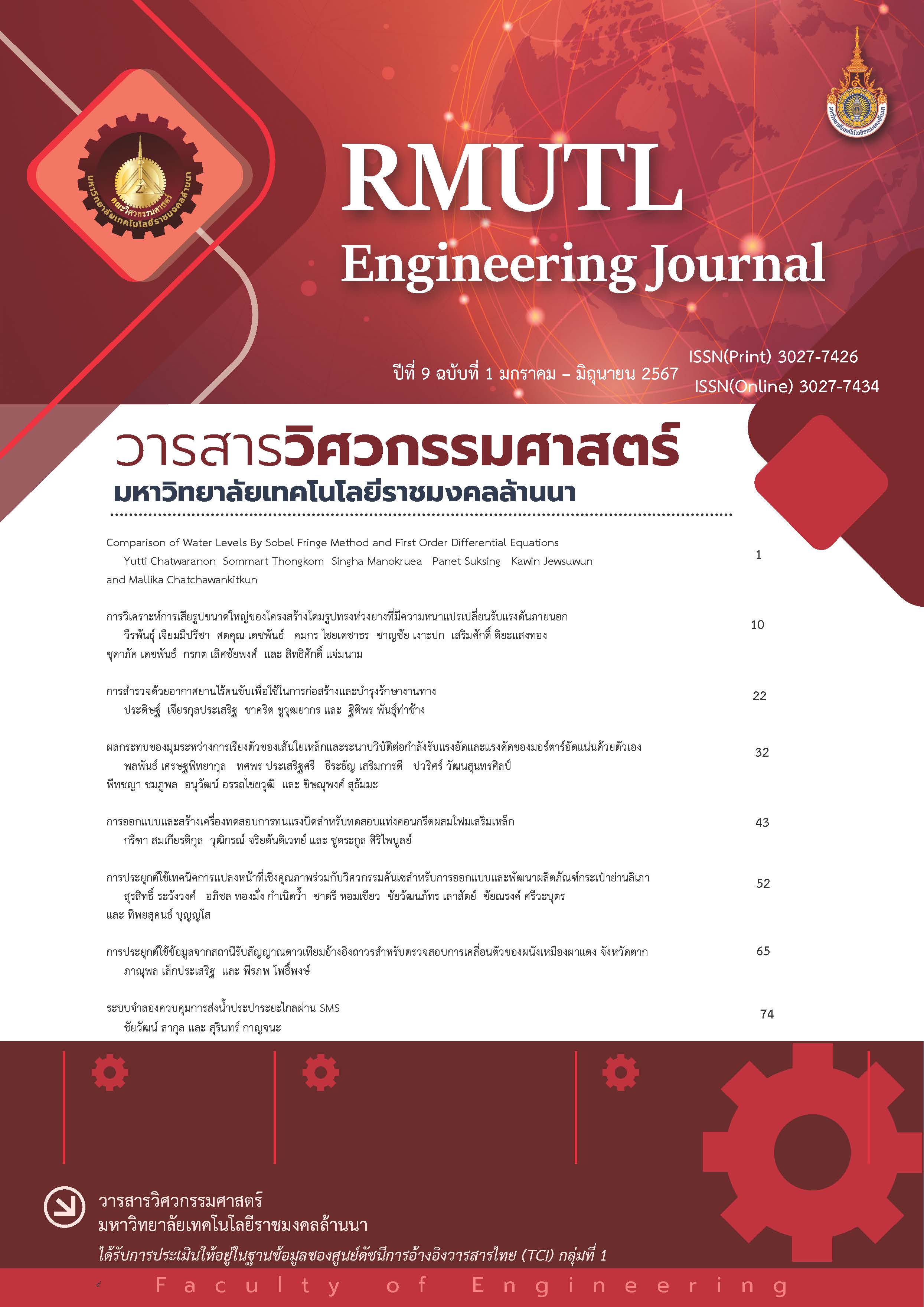Design and fabrication of torsion testing machine for reinforced foam concrete
DOI:
https://doi.org/10.14456/rmutlengj.2024.5Keywords:
torsion testing machine, concrete, foamAbstract
The objective of this research was to design and fabricate a torsion testing machine. Recently, there have been more applications of composite concrete materials for torsion. The torsion testing machine used the principle of torque from the motor with a gear ratio-reduced speed, which was then transmitted to the chain. The load cell was used to measure the force generated by the chain's tension. During calibration, the standard workpiece properties were compared to the experimental data of the new torsion testing machine, and the results showed that they were acceptable. From the experiments, the torsion resistance values of all three pieces were in the range of 75-100 N·m, and they would break apart after the twisting angle exceeded 35 degrees. In the case of reinforced foam concrete, cracks were observed to appear along the axial direction, confirming torsion. The average torsional resistance of reinforced foam concrete, calculated using formulas that adjusted the densities to approximately 600, 700, and 800 kg/m3, were found to be 13.05, 22.67, and 31.87 N·m, respectively. Furthermore, these findings can be helpful in determining the torsional resistance properties of other materials, such as fiber-concrete and wood-concrete.
References
Elwell DJ, Fu G. Compression testing of concrete: cylinders vs. cubes. 1995.
Ramamurthy K, Nambiar EK, Ranjani GI. A classification of studies on properties of foam concrete. Cement and Concrete Composites. 2009; 31(6):388-96.
Bressan JD, Unfer RK. Construction and validation tests of a torsion test machine. Journal of Materials Processing Technology. 2006;
(1-3):23-9.
Akin JE. Finite element analysis concepts: via SolidWorks: World Scientific; 2010.
Shigley JE, Mischke CR. Standard handbook of machine design. (No Title). 1996.
Larrabee Jr WF. A finite element model of skin deformation. I. Biomechanics of skin and soft tissue: a review. The Laryngoscope. 1986 ; 96(4):399-405.
Mises RV. Mechanik der festen Körper im plastisch -deformablen Zustand. Nachrichten von der Gesellschaft der Wissenschaften zu Göttingen, Mathematisch-Physikalische Klasse. 1913;1913: 582-92.
Downloads
Published
How to Cite
Issue
Section
License

This work is licensed under a Creative Commons Attribution-NonCommercial-NoDerivatives 4.0 International License.






